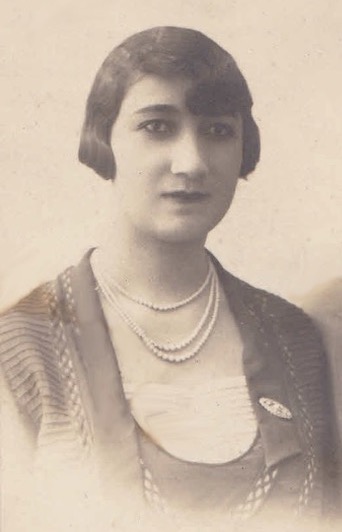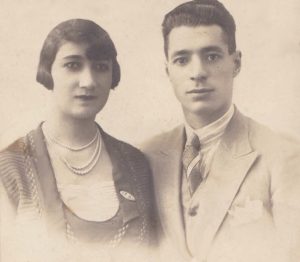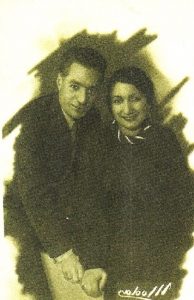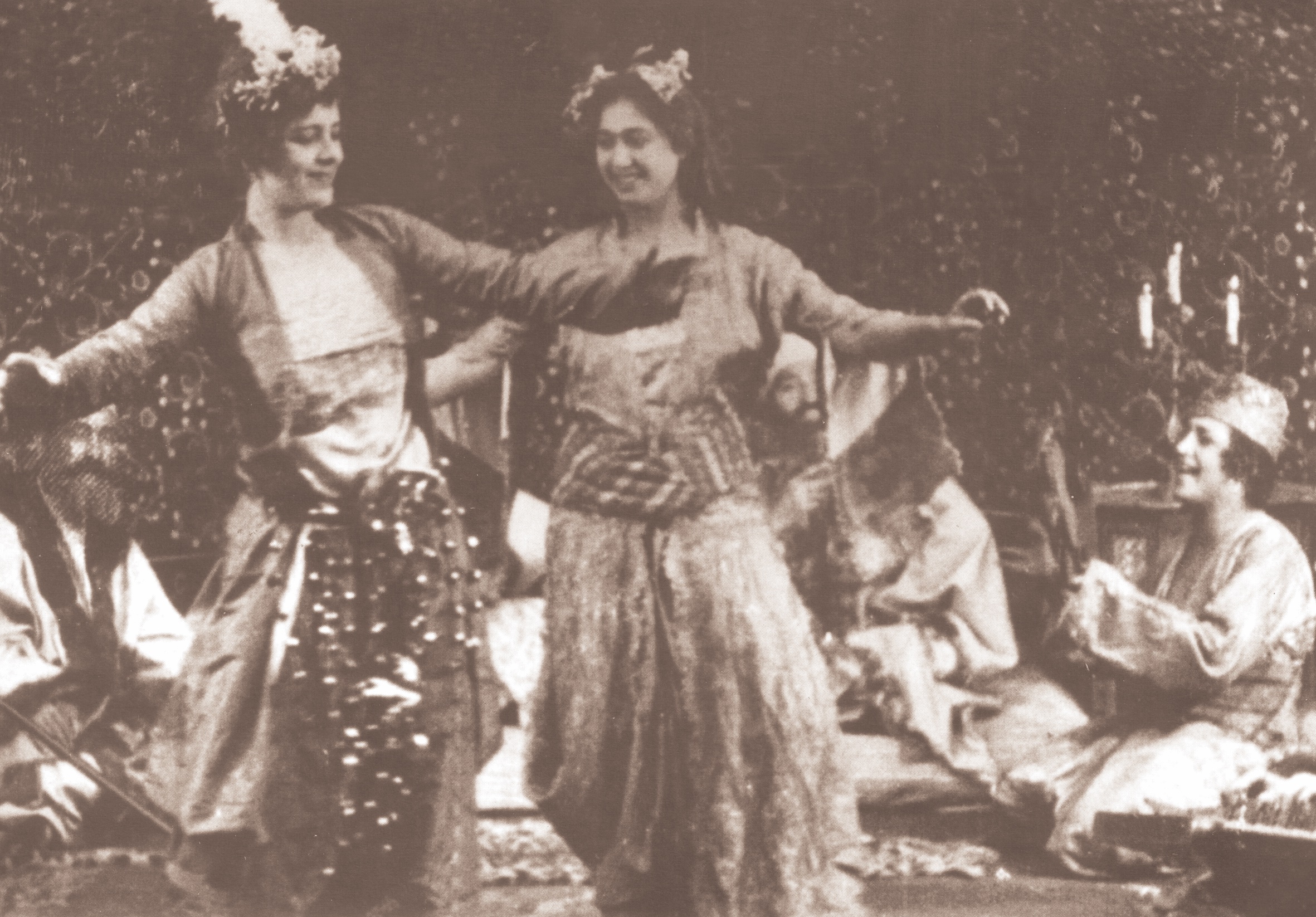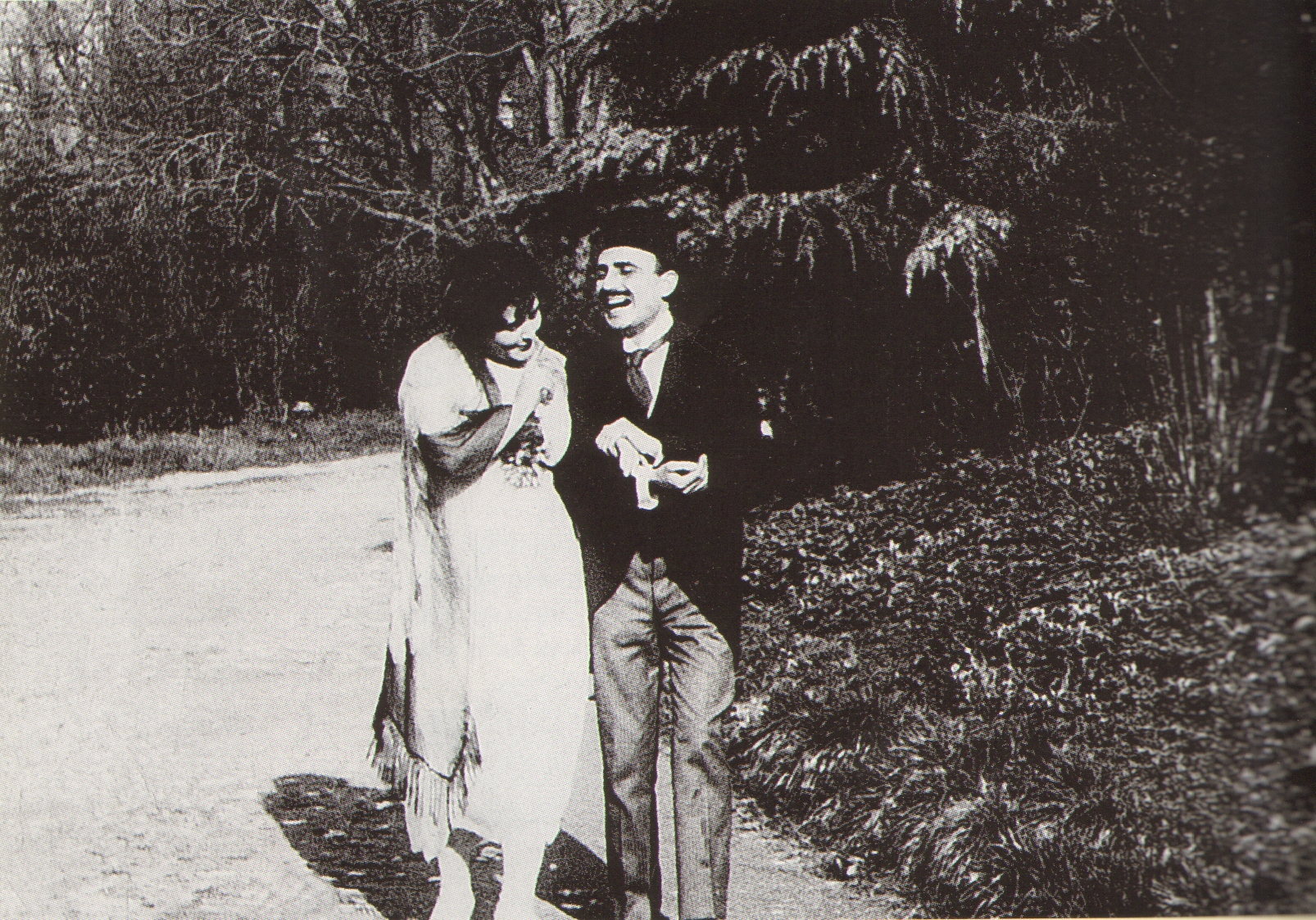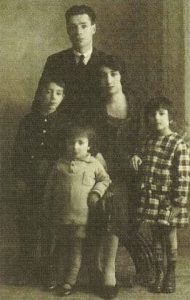Sabahat Filmer’s name remains largely unknown today despite her dedication to the early film industry, women’s movement, and the nationalistic struggle in Turkey as well as her important role as one of the founders of an early film company there. According to Sabahat’s own words, her involvement with cinema began in 1918 during the occupation of Istanbul by the British, French, Italian, and Greek armies after the Ottoman Empire’s defeat in World War I (S. Filmer, Atatürk 34). The late 1910s was also the period in which the women’s movement became largely Muslim and Turkish, compared to earlier decades, in the Ottoman lands (Özdemir 291-325). Filmer, who self-identified as a Turkish secular nationalist, was an active member of the Society of Modern Women, which was established in the 1910s (S. Filmer, Atatürk 44). Given all this, it is not surprising that her pioneering work in the early film industry in Istanbul is bound up with her efforts in the women’s liberation movement as well as the nationalist struggle for independence.
The Ottoman Archives have a record of Sabahat Filmer first studying literature and then switching to science in 1916 (Başbakanlık Devlet Arşivleri [1916]). Perhaps this change in focus was due to her developing an interest in the technology of cinema: during her time at university, she started an internship at the Army Film Center, where soldiers with backgrounds in photography were trained as camera operators, and many early propaganda films, as well as early feature-length dramas, were made. Sabahat’s duties at the Center included organizing the screenings of the propaganda and feature films. She also most likely worked as an assistant director and collaborated with a team of screenwriters at the Center. During this period, she was also an assistant to a prominent female novelist, Halide Edip Adıvar, who occasionally wrote about cinema for the newspaper and used it in her novels as an analogy to depict her characters’ mental states and changing consciousnesses. (In the 1920s, Halide Edip Adıvar also worked on the cinematic adaptations of her novels.)
Owing to Sabahat’s connections with the Army Film Center, it became the meeting place for the Society of Modern Women , which was not only working to support women’s rights, but also assisting war veterans at that time (S. Filmer, Atatürk 34). Some of the organization’s meetings were attended by the future founder of the Turkish Republic, Mustafa Kemal Atatürk, when he was a high-ranking army commander before the start of the National War of Independence (1919-1922). According to Sabahat, the Center was then run by Ottoman soldiers who had worked on German propaganda films during World War I (Atatürk 34). Around this time, Atatürk was gathering troops to prepare for Turkey’s War of Independence, and he, along with other Ottoman generals, frequented the Center to see war newsreels (S. Filmer, Atatürk 35). As a result of her proximity to Atatürk at the Center, Sabahat became an active participant in the independence movement (S. Filmer, Atatürk 88-89). In May 1919, for example, Sabahat and other members of the Society of Modern Women began organizing rallies that called upon the people of Istanbul to take action against the Entente armies that had occupied Izmir, another major Ottoman city. Sabahat was among the public speakers at one of these events. The rallies reportedly gathered approximately 200,000 women and were rigidly controlled by the occupying armies (S. Filmer, Atatürk 49). Her soon-to-be husband, and the camera operator filming these rallies, Cemil Filmer, recalls that he had to be very careful and hide the equipment during the filming (C. Filmer 107). In later years, the couple reused the footage Cemil had captured at the rallies for a costume drama they produced entitled Allaha İsmarladık (Sami Ayanoğlu, 1951). This recycling of these images can be seen as closely connected to the couple’s active participation in the nation-making cultural revolution.
By 1919, Sabahat called the Army Film Center her workplace, a workplace where she had a “good time,” where she loved her job as well as her co-workers, but also where she felt “dependent on others” (S. Filmer, Atatürk 83). That same year, while enduring the pressures and threats of the occupying army, Sabahat was invited to work on the production of two feature-length films made by the Center (Çalıkışu 47). Both films featured female protagonists who could be classified somewhere between vamps and divas. It is unclear to what extent Sabahat, possibly the only woman working in the Center, influenced the development of these plots. However, it is evident from both her memoirs and the literary stories she published that year that she had a self-professed tendency to create abstract and stereotypical female characters (S. Filmer, Atatürk 54; Hüsameddin, “Kadın Kalbi”; Hüsameddin, “Zehirli Kudret”). The titles of these two films, both directed by Ahmet Fehim, were eponymous with their heroines: Binnaz (1919) and Mürebbiye/The Governess (1919). Of these two films, only parts of Binnaz seem to have survived today. It is difficult to determine Sabahat’s responsibilities during the production of both films, as the only thing we currently know is that she worked for the Center during the writing, production, and release of these films. Considering that she was also publishing short stories at the time and mentions working closely with the director of these films in an undated (and unpublished) letter to a Turkish film historian, I believe she was involved in the team of screenwriters and assistant directors (S. Filmer, Letter to Burçak Evren).
Binnaz, a costume drama about two men’s quarrel over a woman and the tragic death of one of them, was allegedly a rewriting of Victor Hugo’s play “Marion de Lorme” (And 12-15). Set in the 1770s, a period known in Ottoman history as one filled with debauchery and corruption, its depiction of a glorious past during a time of war and poverty could be considered a form of nationalistic nostalgia. As a historical drama, Binnaz was successful at the box office both in Turkey and in the United Kingdom, but it was still deemed a failure by a popular local journal on stage arts (K.R., “Temaşa Muhasebesi”). In reviews of the film, the character of Binnaz was depicted as a “yosma” (a Turkish pejorative word that refers to the beauty and low virtues of a woman) and she has been defined as a “vamp” more recently (Özgüç 25) since the source text was about a courtesan. According to a review written in 1920, the body language and movements of the main actress were “unpleasant” as the male reviewer found her seemingly “hysterical and ambivalent” gestures toward her lovers “immoral and tasteless” (Arcan 2).
The current version of Binnaz, found in the national archive, is fragmented and re-edited. This sole remaining copy is half the length of the original release. Having only seen this version, I am reminded of certain Italian diva films; Binnaz shares formal and narrative features with these melodramatic and emotionally excessive stories, such as a hedonistic mise-en-scene, close-ups on women’s faces and figures, and the incorporation of music, dance, prostitution, a love triangle, jealousy, and a femme fatale. Binnaz, as a courtesan, plays the mandolin, dances for men, wears luxurious costumes, and mingles with pashas and high-ranking officers. However, her heart belongs to an ordinary private soldier who is later sentenced to prison. It is also noteworthy that the film was made during a period in which Italian diva films were very popular among the Istanbulite audiences (Balan 55). Additionally, in the current version of the film, perhaps similar to the Italian divas, Binnaz is ultimately a victim of her own making. However, it is difficult to ascertain whether her character was deliberately modeled after the diva or vamp type. As much as Binnaz offers more visibility to women compared to the other extant Turkish silent films, its subtle misogyny is not less problematic.
The Governess, the second feature that Sabahat worked on, was also an adaptation, this time of a novel about a French governess who corrupts and has affairs with the men in the Turkish family for which she works. Having been produced under dire conditions due to the war and the occupation, the film was disdained by contemporary Turkish critics for its technical inadequacies (Arcan 1-2). Moreover, the film encountered resistance as a result of the growing scope of the occupying countries’ methods of surveillance, which began including the inspection of local film shows in November 1918. The Governess was banned by the French army for misrepresenting French women (Özuyar 28). It is noteworthy that Sabahat does not mention the occupying forces’ involvement in the film inspections in her memoirs, nor have I seen her name in relation to the ban of The Governess in the press.
Unfortunately, Sabahat’s name was almost never mentioned in newspaper reports about Binnaz and The Governess. While searching for her name, I came across a mention of a “lady” clerk during the press screening of The Governess (Arcan 1-2). This anonymous “lady,” most likely Sabahat, was presented to the press by Sabahat’s future husband as the assistant of the Army Film Center. She not only introduced the film to the press, but also outlined the Center’s vision and its new film projects. The reporter describes her as “a serious and well-educated woman” with “a delicate voice and decent manners” (1-2). Decades later, it turns out that Sabahat’s nickname in the film industry was “the lady,” according to both a famous Turkish auteur (Akad 235) and a dubbing manager trained by Sabahat herself (Sarıcı, “Kendi Sesinden Sinemanın Sesi”).
After the war for national independence began in 1919, Sabahat and Cemil started working on processing and screening propaganda films at the Center, where Atatürk was again in the audience, along with the members of the Society of Modern Women (S. Filmer, Atatürk 88). One of the most popular newsreels they showed was Atatürk’s Inspection of the Izmit Front (88). Sabahat recalls that these screenings made them all feel “peaceful as if their hearts attended a religious service” (S. Filmer, Atatürk 90). She deemed these screenings very important for the national struggle as they imparted a sense of mission and purpose to people. (She does not mention if they showed images of the earlier rallies as well.) During the War of Independence, Filmer also worked as a nurse for the newly-founded Turkish Red Crescent, which was affiliated with the International Red Cross (Ömer and Hacıfettahoğlu 157).
After her marriage to Cemil in 1919, the couple moved to Izmir and opened up a movie theater (S. Filmer, Atatürk 90-91). In 1923, the year the Turkish Republic was founded, Sabahat organized a special film show for Atatürk. According to her memoirs, this was the first show where a mixed-gender Muslim audience sat together in the theater (134). The accuracy of this statement is speculative as there were different practices regarding gender segregation in the movie theaters of the Ottoman state. However, archival documents show us that as early as 1908, Muslim women and men were seated together, but that was soon strictly banned. Other official documents highlight certain patriarchal reservations regarding women’s attendance in movie theaters in general (Başbakanlık Devlet Arşivleri [1908]; Başbakanlık Devlet Arşivleri [1913]). It seems, then, that when Sabahat and her husband organized their show in the newly-founded Republic and the curtain separating men and women was removed, it was one of the first instances of a mixed gender audience in some time. Furthermore, according to Sabahat, this particular audience witnessed another “revolution” in show business: it was also the first time that Muslim actresses appeared on stage in Turkey (141).
That same year, the couple opened a second cinema hall in Izmir (S. Filmer, Atatürk 139). This time it was an open-air theater called Lale Bahçesi. Sabahat began bringing nitrate films from Istanbul to Izmir, putting her life at risk as she had to travel through navel minefields on and among battleships with easily flammable films. She was still working with the Army Film Center and preparing new film programs for Izmir with some of the films still produced by the army (S. Filmer, Atatürk 140). By the time Sabahat and her husband began running several movie theaters around Istanbul and Izmir in the 1930s, Sabahat had already been asked to be a member of Parliament and had become closer to her former mentor Halide Edip Adıvar (C. Filmer 153). In her husband’s words, she declined the offer to join Parliament “for the sake of the marriage” (153). Sabahat’s memoirs never mention any considerations of becoming a member of Parliament and her husband only mentions it in the one sentence. Sabahat was already the head of their film company by then, and perhaps joining Parliament would have been perceived as a threat by her husband both to their family business and her domestic duties.
Interested in the work of film studios abroad, Sabahat and her husband visited Egypt in the 1950s. After they came back to Istanbul, they founded a film studio, Lale Film. Sabahat owned a 51% share of the company, while her husband and children owned the rest of the shares (Akçura 65). Lale Film is referred to as “the studio managed by ladies” in the title of an interview with Sabahat in 1954 (Gürcan 14). At the end of the interview, when Sabahat was told that the studio was managed very well and the employees seemed dedicated to their work, she underlines that the head of the studio, dubbing manager, translator, editor, and the cleaner were all women (15).
At her studio, Sabahat’s educational background allowed her to work in English and French dubbing. Film dubbing was a common practice in this period in the cinema of Turkey, and Lale Film was among the first dubbing studios in the country (Çalışkaner 16). In her husband’s words: “Thanks to her foreign language skills and having studied literature, Sabahat had great success in dubbing films” (C. Filmer 197). In the following years, Sabahat continued working as the head of the company and dubbing manager while also producing films. In an interview carried out in 1954, she claims that Atatürk used to call her “young poetess” since she had also written poems (“Sabahat Filmer”). In the same interview, she mentions having recently written two film scripts, one of which was approved while the other was under review. I have yet to discover whether these films were ever realized. In the interview, Sabahat also remarks that “the best film of that year was Cahide Sonku’s Beklenen Şarkı (1953).” This film was made by Turkey’s first woman film director, Cahide Sonku, whose own studio–a competitor of Lale Film–produced it. Around a decade later, in 1964, Sabahat began acting as a representative for the union of film studios in Turkey (Özön). After fifty years in the film industry, the Filmers sold Lale Film to another dubbing manager, Necip Sarıcı, in 1979 (Sarıcı, “İlham kaynağı daima sinema”).
Sabahat Filmer’s long career in film is extremely significant, yet we must rely on alternative sources to fully understand her life and work. Even looking into the reviews of the films she worked on does not prove fruitful. It is mainly through personal accounts, such as her and her husband’s memoirs, that we can trace her work in film. Her grandchild provided me with the years of her birth and death in a private conversation. Her work in other areas, such as her stories (published under the name Sabahat Hüsameddin) like “Kadın Kalbi” (“Woman’s Heart,” 1919) and “Zehirli Kudret” (“Poisonous Power,” 1919), as well as the records of the Red Crescent, provide basic insights into her life and creative development. The main resource for this profile is Sabahat’s memoirs, entitled Great Steps on the Path to Atatürk. As this title suggests, it is filled with a sense of patriotic duty and passion in service to secular nation-building under the rule of Atatürk. Her devotion to a one-party state is also to be further investigated and critiqued. While there may not be records of Filmer’s life and early work in the official accounts of film history, she nevertheless remains the first woman behind the camera in Turkey, who worked extensively in the development of cinema.
See also: Bedia Muvahhit and Neyyire Neyir

